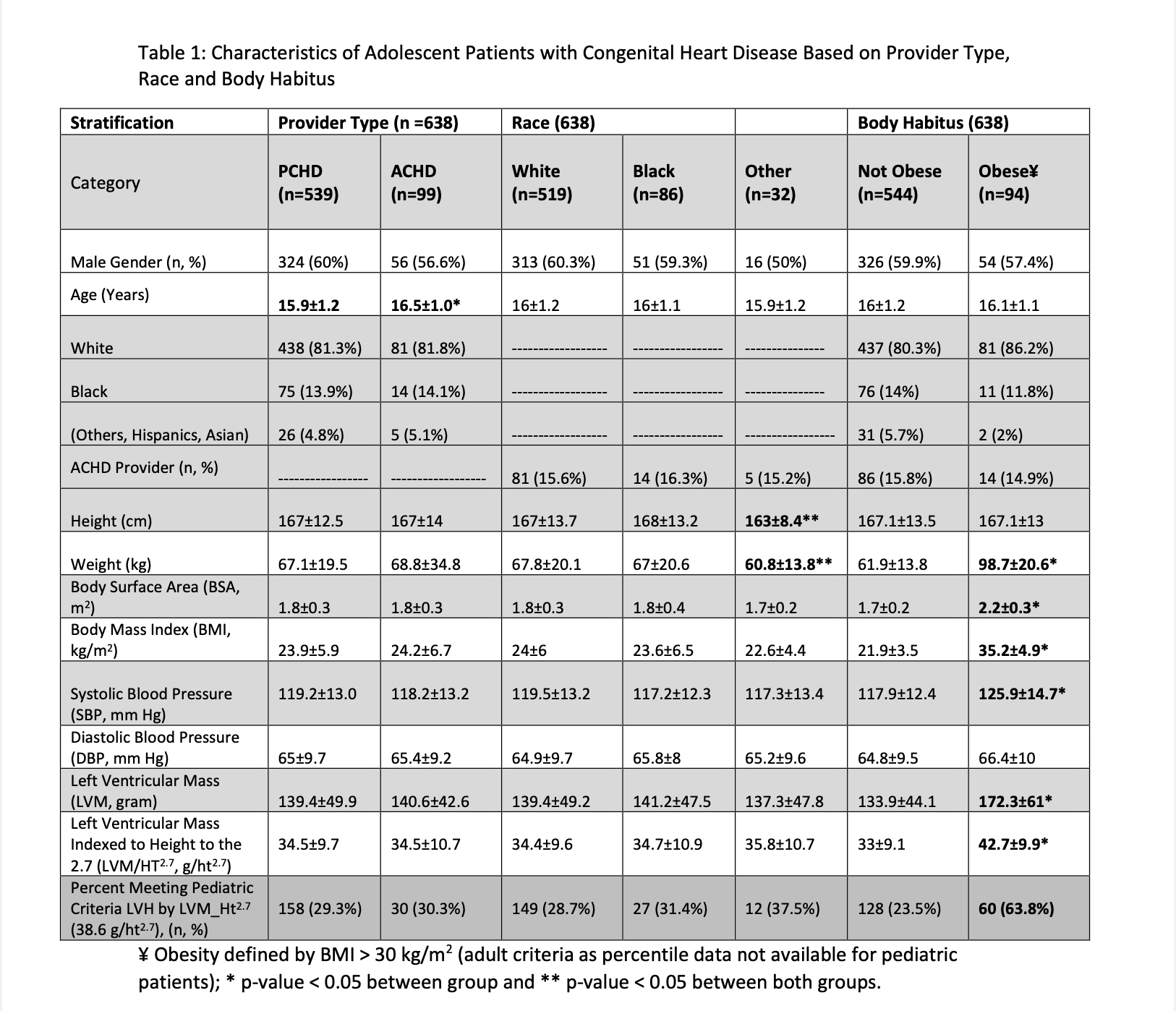Cardiology
Cardiology 1
207 - Obesity as a Driver of Elevated Left Ventricular Mass in Adolescent Patients with Congenital Heart Disease Despite Early Transition to Adult Congenital Heart Disease Providers
Saturday, April 29, 2023
3:30 PM - 6:00 PM ET
Poster Number: 207
Publication Number: 207.203
Publication Number: 207.203
Stephen C. Ream, Nationwide Children's Hospital, Columbus, OH, United States; Aaron Walsh, Nationwide Children's Hospital, Columbus, OH, United States; Andrew H. Tran, Nationwide Children's Hospital, Columbus, OH, United States; Kan N. Hor, Nationwide Children's Hospital, Columbus, OH, United States

Stephen C. Ream, MD (he/him/his)
Resident Physician
Nationwide Children's Hospital / The Ohio State University
Columbus, Ohio, United States
Presenting Author(s)
Background: Medical and surgical advancements have improved survival of patients with congenital heart disease (CHD) such that there are more adults living with CHD than children. Our center begins transition as early as 14 years of age with the goal of complete transition by adulthood. ACC/AHA guidelines recommend transition to ACHD providers due to evidence of mortality benefit, though drivers of this benefit are not well understood. However, there is evidence that elevated left ventricular mass (LVM) increases adverse cardiovascular events in adult non-CHD studies.
Objective: We sought to determine the impact of factors such as obesity and race on transition from pediatric (PCHD) to adult (ACHD) providers as well as the impact of provider, race, and obesity on the outcome measure of LVM.
Design/Methods: Retrospective EMR data was obtained for CHD patients at our center aged 14-18 from 2012-2019. Demographic data, age, height, weight, BMI, and blood pressure (BP) at the time of echocardiography were obtained. Patients were stratified based on following primarily with PCHD or ACHD, race, obesity and we evaluated the impact on rate of transfer and LVM. Statistical analysis was performed using Student’s T-Test.
Results: 638 patients met inclusion criteria with data summarized in Table 1. Age, gender, race, height, weight, BSA, BMI, BP and LVM did not differ based on provider type or race. 30% of patients met criteria for elevated LVM (LVM/HT2.7, > 38.6 g/ht2.7) regardless of provider type or race. When dichotomized by obese (BMI ≥ 30 kg/m2) and non-obese, there was no difference in gender, age, provider type or race. As expected, the obese group had higher BMI (35.2±4.9 kg/m2 vs 21.9±3.5 kg/m2, p < 0.0001) and higher systolic BP of 125.9±14.7 mmHg vs 117.9±12.4 mmHg, p < 0.0001). Most striking is the elevation in raw and indexed LVM (172.3±61 vs 133.9±44.1 g/ht2.7, p < 0.0001 and 42.7±9.9 vs 33±9.1 g/ht2.7, p < 0.0001) with 63.8% meeting criteria for elevated LVM compared to 23.5% in the non-obese group.
Conclusion(s): Elevated LVM is a known predictor of adverse cardiovascular events in adults. Our data suggest that obesity is a key driver of LVM in adolescent patients with CHD regardless of race or provider type. This reinforces the importance of obesity management by both PCHD and ACHD providers. While disparities based on race and provider type may exist, obesity was the main driver of LVM in our adolescent CHD patients. Our study is limited by using LVM rather than mortality as an outcome measure in a group of young CHD patients. Future longitudinal studies and an older population is needed.

